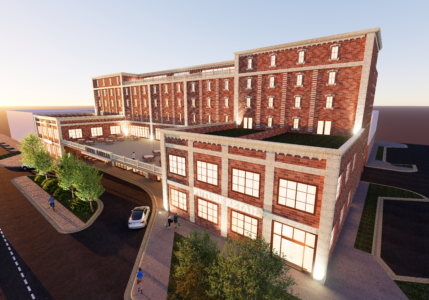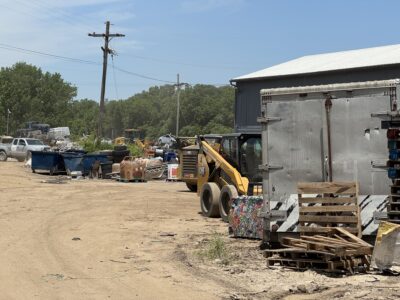
Census stats: Lawrence still isn’t a city of 100,000 people; Douglas County is 5th fastest growing county in state

photo by: Source: U.S. Census Bureau
This map shows just how many Kansas counties lost population, according to new 2020 Census totals. The orange counties lost population. Yellow counties grew by less than 5%. Green counties grew by 5% to 20%, with the darker the shade of green representing higher growth rates.
Story updated at 5:26 p.m. Thursday:
Lawrence is still not part of the 100,000-people club.
The U.S. Census Bureau’s official population totals came out Thursday, and Lawrence didn’t hit the 100,000 level, despite City of Lawrence officials estimating earlier that we had well exceeded the mark.
Lawrence’s 2020 census population stands at 94,934 people. The city of Lawrence earlier this year had estimated the city’s population at 103,351 people.
The difference of nearly 8,500 people likely will create speculation that there was an undercount of actual residents in Lawrence during this crazy pandemic year. The city’s top planning official wasn’t ready to say that on Thursday afternoon, but he said the numbers definitely deserved a close look.
“I don’t know the answer to it right now,” Jeff Crick, the director of the Lawrence-Douglas County Planning Department, said when asked whether Lawrence perhaps was the subject of an undercount by the Census Bureau.
He said his office would be looking at “behind-the-scenes” data to try to determine why the city’s population estimate and the official Census Bureau number differed by so much.
The Census Bureau’s population number is often more than just a number. It is a key figure in many federal funding formulas, and generally cities that cross the 100,000 population threshold are believed to get greater attention from everybody from grant-funders to national chains looking to expand.
While the number didn’t hit the city’s estimates, the figure of 94,934 people still represents a good amount of growth over the last decade. The city’s 2020 total is up from 87,643 in the 2010 Census. That’s an 8.3% growth rate for the decade.
That was a better growth rate than for Douglas County as a whole. County population totals also were released on Thursday. The county’s official 2020 Census population is 118,785 people. That’s an increase of 7,959 people since 2010. That’s good for a growth rate of 7.2% for the decade.
That 7.2% growth rate was significantly slower than the last decade, when the county’s population grew by 10.9%. The fact that growth was slower than last decade isn’t much of a surprise. From a Census Bureau release earlier this year, we already knew that the total population of the U.S. grew by its slowest rate since the 1930s.
The numbers show Douglas County was the fifth fastest growing county in the state. Here’s a look at the top 10:
• Pottawatomie, up 17.3%
• Johnson, up 12.1%
• Wyandotte, up 7.5%
• Leavenworth, up 7.4%
• Douglas, up 7.2%
• Geary, up 6.9%
• Sedgwick, up 5.1%
• Finney, up 4.6%
• Scott, up 4.4%
• Miami, up 4.3%
Only 24 of the state’s 105 counties posted population growth for the decade. Even some counties that once were growing quickly saw a moderation in growth. Riley County, home to Kansas State, grew by just 1.2% for the entire decade, for example.
Morton County, the most southwestern county in the state, had the worst rate of decline, with its population falling by 16.5% for the decade.
In terms of total numbers, Johnson County has the most people at 609,863, about 86,000 more than Sedgwick County. Douglas County continues to be the fifth most populous county in the state. Greeley County, along the Kansas-Colorado border, is the smallest county with 1,284 people.
Douglas County also serves as the Lawrence metropolitan area. That means the Lawrence metro area also had a growth rate of 7.2% for the decade. That was a slightly slower growth rate than what other metro areas across the country experienced. Metro areas nationally grew by 8.7% on average.
But the Lawrence metro area grew faster than most other metro areas in Kansas. It was the second fastest growing metro area in the state. Here’s a look:
• Kansas City, up 9.1%;
• Lawrence, up 7.2%
• Manhattan, up 5.5%
• Wichita, up 3.9%
• Topeka, down 0.3%
Here are some other news and notes from the census numbers:
• Towns around Lawrence also got their population totals on Thursday: Eudora continues to be the second largest town in Douglas County at 6,408 people. That’s 272 more people than in 2010, which equates to a growth rate of 4.4%. Baldwin City grew by 311 people to 4,826, a growth rate of 6.8%, while Lecompton actually shrank. The Census Bureau shows 588 people, down 37 people from 2010. That likely will catch Lecompton by surprise. The Census Bureau, in its annual population estimates, had shown Lecompton was growing slightly. Unlike the estimates, though, the official census is based on a count of residents rather than an estimating formula.
• Wichita remains the largest city in the state by quite a bit. Its population totaled 397,532, besting Overland Park at 197,238. Other cities of note: Kansas City, Kan., 156,607; Olathe, 141,290; Topeka, 126,587; Manhattan, 54,100.
• Thursday’s release also includes some data on age and race breakdowns for city, county and state populations. But, honestly, the Census Bureau released that data in a way that hasn’t been easy to access. The department doesn’t expect to put that data on its regular website until September. We’ll get the data before then, but I don’t have it all at the moment. (If you are really interested, Google the Kansas Statistical Abstract. That KU entity is downloading the complex census files and posting them to its website as it gets them completed.)
But I did glean a couple of interesting pieces of data related to race. The Census Bureau put together something called a Diversity Index. It measures the chance that if you picked two random people from a place, they would be of different races. In Kansas, the chance would be 45% in 2020. In 2010 it was 37%. That gives you a sense of how the state has become more diverse, which certainly was the national trend as well.







